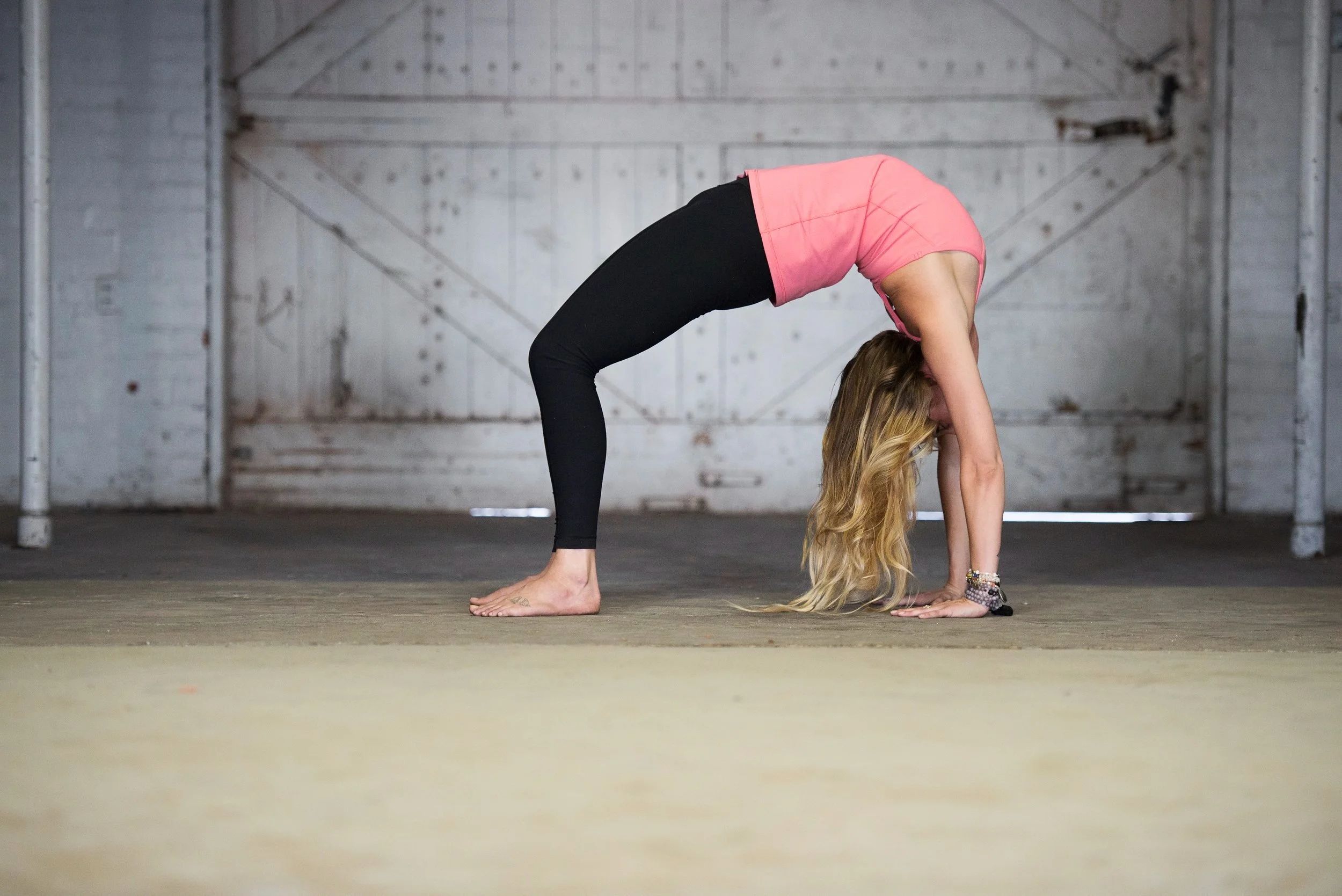How Hot Is Hot Yoga? Let’s Break It Down
You walk into class, and boom—it hits you. Thick heat, like someone left the oven open. That’s hot yoga.
But how hot are we talking? Sauna-level or surface-of-the-sun vibes?
This isn’t just about flexing in a sweat puddle. The heat’s got a purpose—loosening muscles, boosting endurance, maybe even clearing your head after a trash day.
Still, it’s not for everyone. Some love it. Some tap out halfway through.
This guide breaks it all down—temps, styles, what it feels like, and how to not melt. So you can walk in knowing exactly what you’re sweating for.
How hot is hot yoga?
Hot yoga temperatures range from 90°F to 105°F, often with humidity, making classes feel like a sauna-style full-body workout.
Key Takeaway
Hot yoga classes typically range from 90°F to 105°F, often with added humidity.
The heat helps loosen muscles, deepen stretches, and elevate heart rate.
Bikram is the hottest (105°F, 40% humidity), while vinyasa, Hatha, and other styles vary.
Expect intense sweat, mental focus, and a cardio-style burn.
Beginners should hydrate early, take breaks, and listen to their bodies.
What Is Hot Yoga, Really?
Hot yoga isn’t just regular yoga with the thermostat cranked. It’s a whole vibe. You're flowing through poses in a room heated anywhere from 90 to 105°F, depending on the style. Sweat? That’s part of the deal.
The OG version is Bikram 26 fixed poses, done in a steamy 105°F room with 40% humidity. Think: structure, discipline, and heat that hits like a wall. While many of these practices are intense, finding a gentler approach can perfectly transition into a morning yoga routine. Then you’ve got other styles like hot vinyasa or power yoga—less rigid, more movement, and still sweaty enough to fog up your glasses.
Bottom line? If regular yoga is a calm Sunday brunch, hot yoga is brunch in a sauna with a side of grind.
So, How Hot Is Hot Yoga?
Let’s cut to it. Hot yoga isn’t just “kinda warm.” It’s sweat-on-your-elbows hot.
Bikram yoga runs the thermostat up to 105°F with 40% humidity. That’s peak-level heat—closer to a Vegas summer than your average gym class. It's like stretching in a steam room, but with way more downward dogs.
Other styles like hot vinyasa or hot power yoga keep things slightly cooler, usually between 90°F and 98°F. You’ll still sweat like crazy, but it feels more “infrared sauna” than “heatwave panic.” The heat also drives up your hot yoga heart rate, giving you that extra burn even when the flow is slower.
Each studio plays by its own rules. Some use heaters, others use humidifiers. A few just pack the room with bodies and let things cook naturally. You’ll feel the difference depending on airflow, lighting, and how close you are to the heaters.
If you’ve never done it before, expect your body to protest at first. The heat hits fast. Your heart rate jumps. Even your mat might feel slick. But if you prep right, you’ll power through.
The vibe? It’s intense but controlled. Like cardio in slow motion. And if you like that "earned your shower" feeling, this is your cheat code.
If all that sounds a bit intense, no shame in easing in with beginner yoga classes Scottsdale studios offer. Plenty of spots cater to first-timers with slower-paced flows and cooler temps, so you can build heat tolerance without jumping into the deep end.
Why Is It So Hot? The Science & Purpose
The heat in hot yoga isn’t just there to make you sweat buckets. It’s doing work.
First, warm muscles move better. The heat helps your body feel looser, so you can stretch deeper without pulling something. Think of it like preheating your body before you get into the real movement.
Second, the extra sweat isn’t just a flex. It pushes your heart rate up, turning yoga into low-key cardio. You’re not sprinting, but your body’s working overtime to stay cool.
Some say the sweat “detoxes” you, but let’s be real—your liver already has that job. What does the heat do? Keeps you focused. Forces you to stay present. Mental fog doesn’t last long when your mat feels like lava.
The vibe is part of the challenge. It’s physical. It’s mental. It’s half yoga, half grit training. That heat? It’s not just background—it’s the main character, especially in a heated Yoga Class Paradise Valley where every drop of sweat pushes you further.
Types of Hot Yoga & Their Temperatures
Not all hot yoga is created equal. Some styles crank the heat for structure. Others just want you dripping by pose three. Here’s the breakdown on the most common types, plus the temp range you’ll sweat through.
Bikram Yoga
Temp: 105°F (40.5°C), 40% humidity
26 set poses, always in the same order
No music, no chatting, just heat and structure
It’s the blueprint for the hot yoga scene
Hot Vinyasa / Power Yoga
Temp: 90°F to 98°F (32–37°C)
Fast-paced flow, music on, sweat flying
Less rigid, more creative than Bikram
Good if you want movement and vibe
Inferno Hot Pilates
Temp: 95°F to 100°F (35–38°C)
Mat-based HIIT with a yoga twist
More planks, less posing
Think: burn meets core flex
Hot Hatha Yoga
Temp: 90°F to 100°F (32–38°C)
Slower-paced, longer holds
Classic poses, modern sweat
Ideal for beginners who want heat without chaos
Warm Yoga
Temp: 80°F to 89°F (27–32°C)
Just enough heat to feel cozy, not cooked
Great intro if you're not ready for full-on sauna mode
Studio-Specific Styles (Modo, CorePower, etc.)
Temp: Varies (usually 90°F to 105°F)
Branded flows, slick playlists, great for that “yoga-but-make-it-luxury” feel
Each one adds its drip to the format
Pro tip: Always check the studio’s temp setup before class. Some keep it tropical, others keep it toasty. Your shirt will still be soaked either way.
Benefits of Practicing in the Heat
Hot yoga isn’t just about the sweat—it’s what that sweat unlocks.
The heat helps your muscles warm up fast, so you feel looser and move more easily. That deep stretch you’ve been chasing? Way more doable when your body's already prepped. Less chance of tweaking something mid-pose, too. Doing yoga in summer makes this easier, allowing you to access flexibility naturally.
Then there’s the cardio side. The heat elevates your heart rate, even in slower flows. So while it looks chill, your body’s working double time behind the scenes. It’s like sneaking in a workout under a zen disguise.
You’ll build serious mental grit, too. Holding poses in a 100°F room? That’s not just balance—it’s focus. You can’t fake calm when the room feels like a toaster.
Bonus: Some people say hot yoga helps with sleep, stress, and skin. Is it magic? Nah. But the combo of movement, heat, and sweat? It’s a solid reset button.
So yeah, it’s intense—but the benefits hit on all levels. Flex, burn, breathe, repeat.
Is It Safe? Risks of Extreme Heat
Hot yoga looks chill, but the heat is no joke. You’re working out in temps that can hit 105°F, and that pushes your body hard. If you’re not prepped, things can get dicey real quick.
Dehydration is the big one. You’re sweating buckets, so if you roll in without water or show up already thirsty, you're asking for lightheaded vibes. Headaches, nausea, dizziness? Red flags. Tap out, not tough it out.
Heat exhaustion’s also a real risk, especially if you try to power through when your body’s begging for a breather.
Pregnant? Have heart issues? Low blood pressure? Talk to your doc before booking that hot class. Some people just aren’t built for the heat, and that’s cool, too.
Hot yoga should feel intense, not dangerous. Take breaks. Hydrate like it’s your side hustle. And if your ego says “don’t stop,” but your body says “nah,” always listen to your body. It’s the smarter one in the room.
Prepping for the Heat: Tips for First-Timers
First time hitting hot yoga? Cool. Here’s your cheat sheet so you don’t melt mid-pose.
Hydrate early. Like, hours before class. Don’t show up with a dry tank. And bring water—actual water, not some neon sports drink.
Wear light gear. Think moisture-wicking and minimal. No heavy cotton tees or layers that trap heat. You want to breathe, not bake.
Eat light. A smoothie, a banana, maybe some yogurt. Heavy meals before class? That’s how you end up regretting life halfway through warrior two.
Mat + towel = must. The mat gets slick, and slipping around in down dog isn’t the flex you think it is.
Arrive early. Claim your spot, get used to the heat, and chill before the sweat-fest starts.
Final tip? Don’t chase the hustle. Take breaks. Lie down if you need to. The goal is flow, not faint.
How to Handle the Heat Mid-Class
Midway through class, and feel like you’re melting? Congrats, you’re doing hot yoga right. But don’t be a hero.
Breathe first. Sounds basic, but deep nose-to-nose breathing cools your body and keeps your head in the game. If you're gasping or shallow breathing, that’s your cue to slow it down.
Take a break. Seriously. Child’s pose is your built-in safety net. No one’s judging. Everyone’s too busy trying not to slide off their mat.
Wipe smart. Use a towel, not your hands, unless you like face-planting in crow pose.
Sip water, don’t chug. Big gulps can mess with your stomach mid-flow. Think small, steady sips between poses.
And if you start feeling dizzy or your vision’s doing the lava-lamp thing? Lie down. Cool down. Reset.
You’re not there to prove anything. Surviving the heat with style? Now that’s the real flex.
FAQs About Hot Yoga Heat
1. How hot is hot yoga, really?
Most classes hit 90–105°F. That’s summer-in-Delhi level. Some hit 40% humidity too. Yeah, it’s steamy.
2. Will I sweat that much?
Oh, 100%. Your mat will be a slip-n-slide. Bring a towel or two. One for the mat, one for your face.
3. Is it safe for beginners?
Totally. Just pace yourself. No one’s handing out medals for staying upright the whole time.
4. Can I leave the room if it’s too much?
Sure. But try to chill in child’s pose first. Most studios prefer you don’t ghost mid-class unless you’re overheating hard.
5. What if I get dizzy?
Sit or lie down. Sip water. Breathe deep. Don’t fight the heat. Flow with it.
Final Thoughts: Is the Heat Worth It?
If you're into a workout that leaves you drenched, stretched, and slightly high on endorphins, hot yoga’s got your name on it. It’s not just about sweating buckets. It’s a full-body reset with a little side of bragging rights. The heat tests your chill, your stamina, and your vibe under pressure. But once you settle into the burn, it hits different—in a good way. Not for everyone, sure. But if you’re curious, sweaty, and kind of into the grind? You’ll get it. And yeah, it’s worth it.

